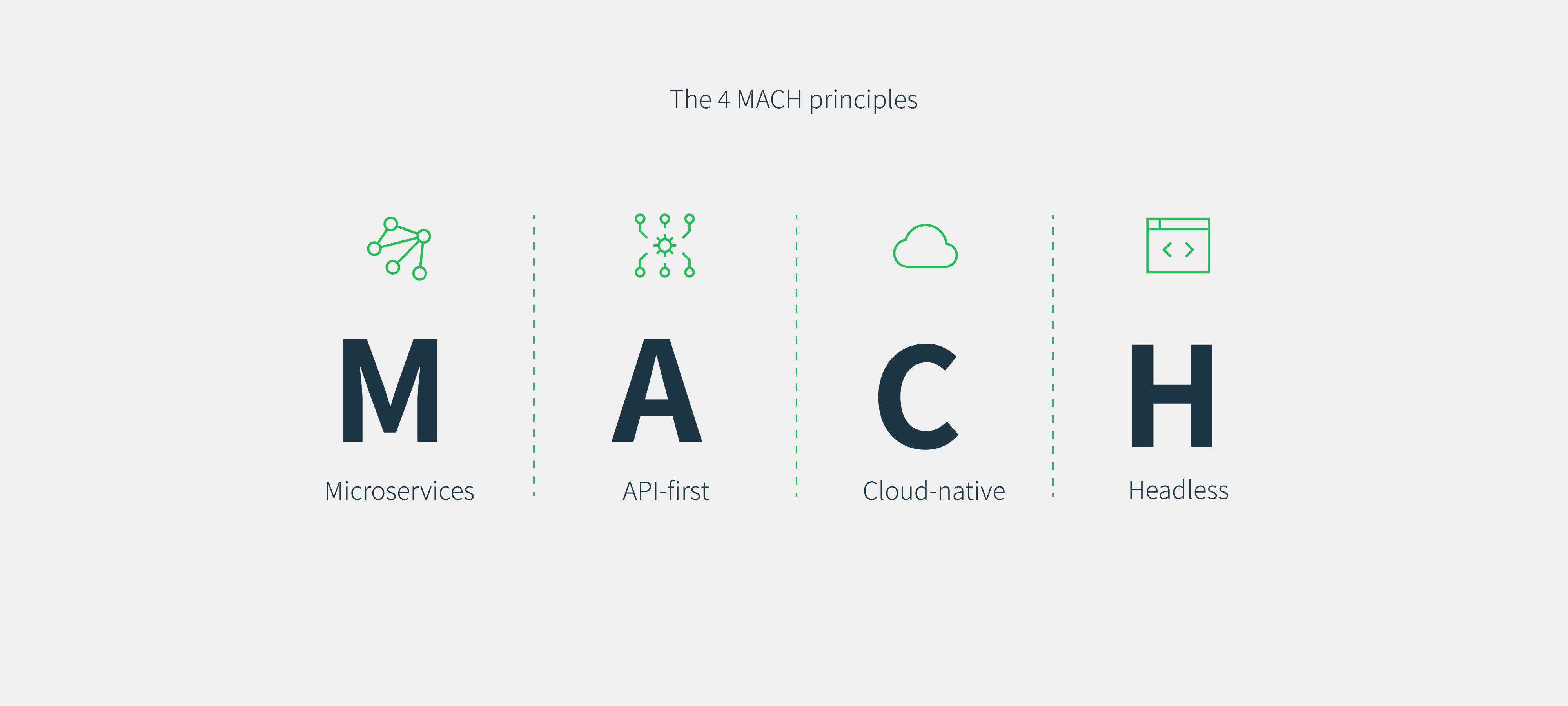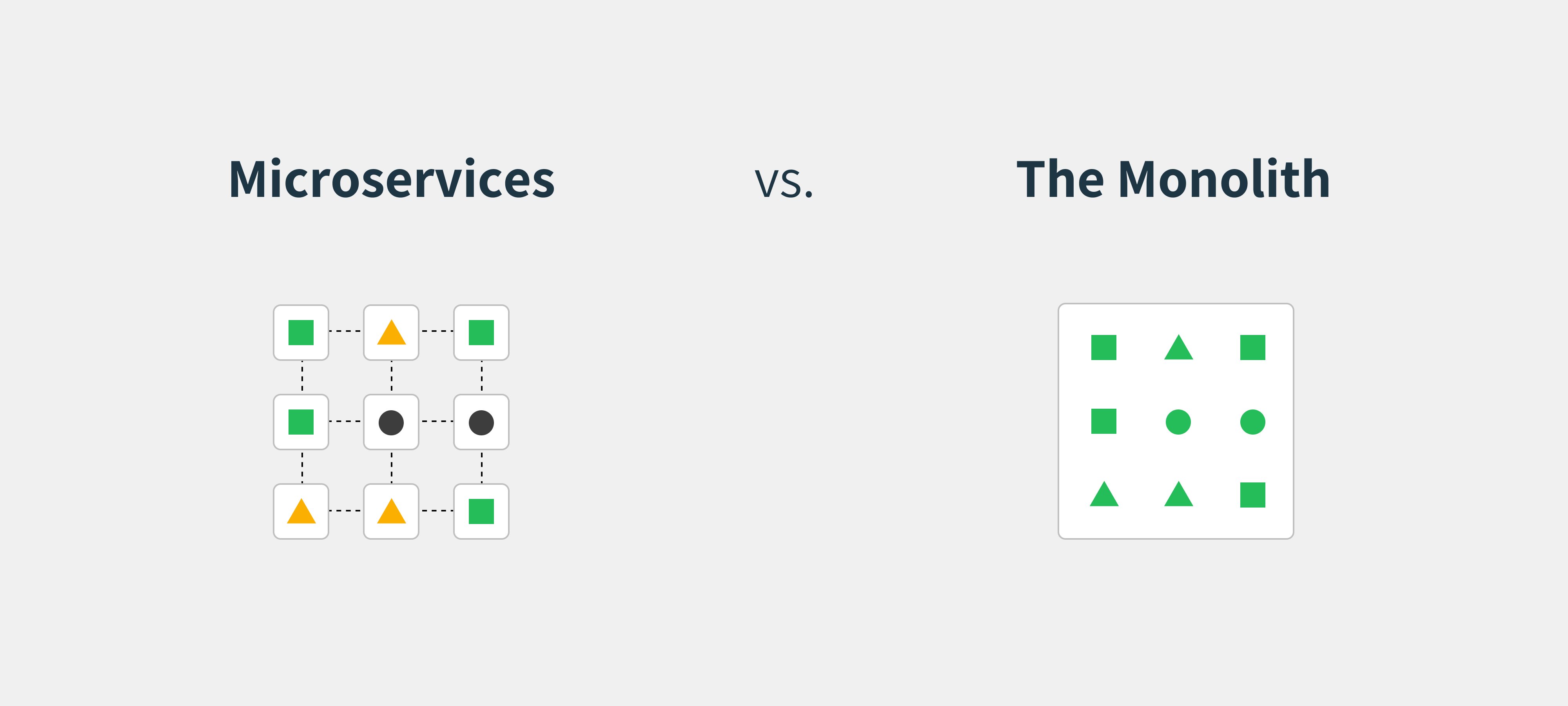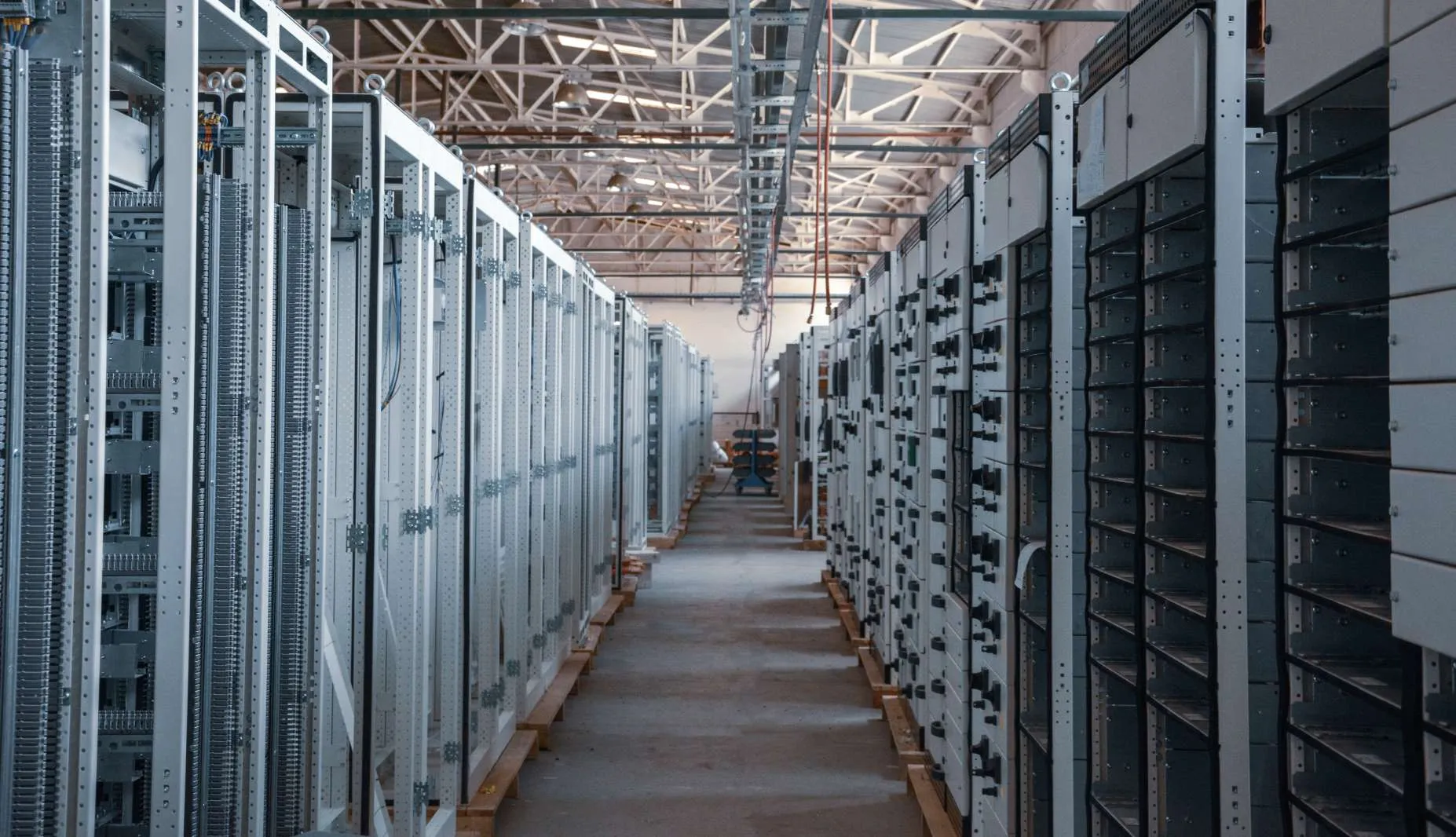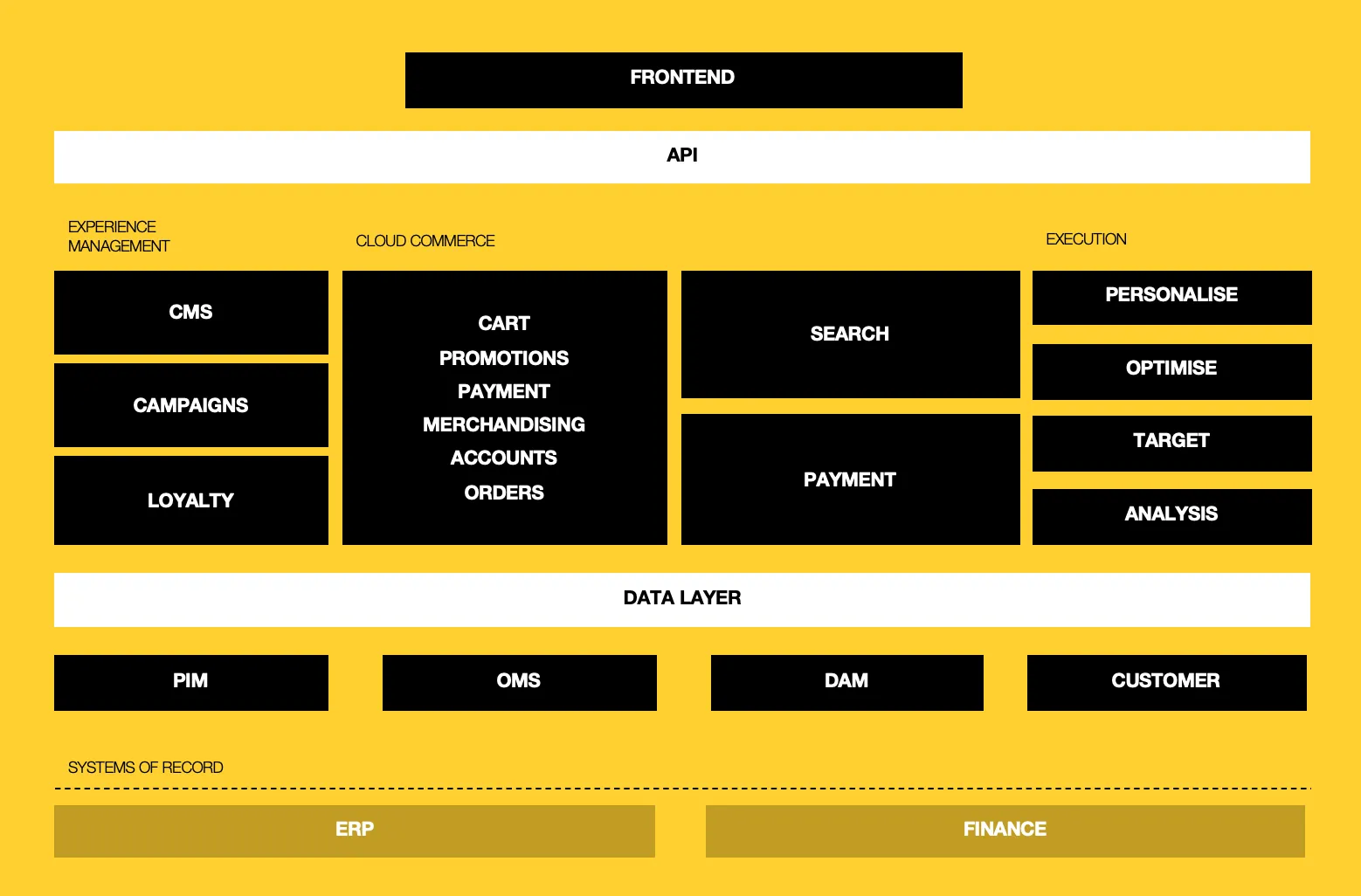The MACH principles (Microservice-based, API-first, Cloud-native, and Headless) describe a set of best practices for developing digital solutions. The manifestation of the MACH principles is Composable Commerce solutions, which are characterized by being modular and component-based, providing a future-proof and scalable IT architecture.

MACH principles in brief
There’s nothing new about saying “the monolith is dead” when the topic is IT architecture and e-commerce.
If you do a Google search for “monolithic architecture e-commerce,” the first 10 results will tell you that microservices are the future, and that the large, heavy custom-built platforms that were once the standard are a dying breed.
In the wake of this discourse, the MACH principles have emerged as a response to rigid monolithic architecture that challenges businesses’ ambitions for growth and agility.
MACH stands for:
- Microservice-based
- Microservices describe an IT architecture where as many functions as possible are their own independent services. Instead of having one system that handles ALL tasks (checkout, cart, analytics, product management), the system is broken down into smaller services (microservices), each performing a specific function.
- API-first
- Once you say Microservices, you almost automatically say API-first. APIs (Application Programming Interfaces) simply allow your systems to communicate with each other. If you build your application from many small services, it naturally becomes necessary for them to exchange data, so APIs will automatically be a critical part of a MACH-compliant solution.
- Cloud-native
- Cloud platforms like Amazon, Microsoft, Google, etc., allow you to manage your solution in the cloud today, which provides much more computing power, increased security, less hardware maintenance, and greater scalability when your applications need it. Therefore, Cloud is also considered the preferred hosting solution for ambitious e-commerce platforms.
- Headless
- When a solution is Headless, the backend and frontend are separated. First and foremost, this means you get complete freedom to design and develop your website or app so that the user experience is exactly as you want it. Secondly, it also means you get the freedom to build your backend with the components that best suit your business.
Each principle in the MACH construct supports the idea of a scalable and less costly e-commerce setup that can ultimately be adapted to meet tomorrow’s challenges.
The manifestation of the MACH principles is what the industry calls “Composable Commerce.” This means component-based e-commerce solutions where each function on the platform is its own microservice that communicates with its “neighbors” via smart APIs.
There is no owner of the MACH principles or the Composable Commerce concept. If you want to know more about MACH, The MACH Alliance is a good place to start. Composable Commerce is coined by Commercetools.
And with that introduction, we’re ready to dive deeper into what the MACH principles cover.

[M] A Microservice-based architecture ensures you a flexible digital foundation
A microservice architecture consists of applications built from a series of independent services (microservices).
In its pure form, each microservice is its own application supporting a specific functionality (e.g., the "shopping cart" on a webshop) and communicates via an API.
Why are microservices interesting?
The microservices approach is based on the desire that systems only perform exactly the tasks we ask of them. Thus, microservices are also a break from the "monolith mindset," where all functions are combined in a single system.
In a microservice architecture, functions are delegated to individual components that are mutually independent. In practice, this results in a number of less complex components that can be updated and maintained independently.
This makes the logic within each component easier to understand, improve, and manage. It gives you the freedom to work on the components that support the most critical business processes here and now, without having to consider the entire system.
A microservice architecture provides the following benefits:
-
Eliminates the risk of a single point of failure
-
Removes unwanted interdependencies that increase system complexity
-
Creates components with clear internal logic that can be easily updated
-
Increases the possibility of vendor freedom (you can choose "best-of-breed" technologies where it makes the most sense economically/functionally)
-
Enables faster time-to-market due to simpler maintenance and deployment processes
-
Focuses more on supporting the business rather than maintaining “deadweight” technology
[A] Well-designed APIs enable smart use of data
It’s hard to imagine a well-functioning microservice architecture that isn’t supported by good APIs. An API enables your microservices to communicate with each other by exposing data in the desired format at the right time.
This way, all individual services (e.g., in a microservice architecture) can exchange data when your users interact with your services.
Why is the API-first approach relevant for your architecture?
With the MACH principles in mind, an API-first approach is a necessity. Once you’ve chosen to work with a microservice architecture, it is APIs that allow your services to work together.
APIs are not a new invention, but as ecommerce solutions increasingly consist of small, independent services, prioritizing APIs in your IT strategy becomes essential.
The benefits of an API-first mindset include:
-
Smart APIs are a prerequisite for a well-functioning IT architecture
-
APIs can be reused for smart data exchange and application — including future services
-
Eliminates unwanted interdependencies that increase system complexity
-
Forces the organization and development team to map communication and workflows in the system, ensuring the user’s needs are supported

[C] Become cloud-native, reduce maintenance, and gain a scalable infrastructure
When you build your solution in the cloud, it is typically with the goal of unlocking the many benefits offered by modern cloud platforms (e.g., Microsoft Azure, AWS, or Google Cloud).
In addition to providing the best possible foundation for scaling your IT platform, modern cloud platforms also come with a range of built-in tools that enable automation of processes (updates, backups, etc.), analytics (AI), and the elimination of costs associated with hardware upgrades and maintenance.
Given the other MACH principles, the idea of interchangeable components and rapid pivots can quickly become expensive if hardware constantly has to keep up with demand. For this reason alone, the cloud justifies its place in a modern IT setup.
Why go Cloud-native?
While the principles of microservice architecture and API-first both focus on development and software, the Cloud-native principle relates more to infrastructure and operations.
“The cloud” is rapidly advancing, and Google, Amazon, and Microsoft are fully focused on delivering the best cloud platforms for the enterprise segment.
For your organization, this means less maintenance, more available SaaS-based features, less upkeep (and thus more time for development and innovation), as well as access to a scalable foundation for your commerce stack.
Benefits of a cloud-hosted application:
-
A cloud platform can help automate your release cycle and reduce costs associated with deployment (e.g., frequent microservice updates).
-
Most modern cloud platforms are packed with tools for managing your cloud environments, reducing costs linked to hosting and deployment.
-
A cloud platform can be scaled up or down as needed, unlike on-site hardware.
Want to talk data?
If you’re interested in hearing our ideas on how data can help your business execute, grow, and scale, we’re ready for a no-obligation conversation.
[H] A headless application is not a headless investment.
A traditional CMS (Content Management System) consists of two layers: backend (body) and frontend (head).
The backend typically manages your content, while the frontend handles its presentation—the graphical interface your users interact with.
Where a traditional CMS usually manages both layers, a headless application allows you to use a CMS (e.g., Umbraco) for the backend, while the frontend can be built with any technology of your choice.
Just like with the microservices approach, this enables you to create a unified user experience based on the technologies that make the most sense—rather than those your preferred backend “forces” you to use.
When should you work with Headless?
We find that companies wanting easy access to add and edit content, without compromising creative freedom across their publishing channels, choose Headless.
However, the overall platform complexity also increases, making Headless more expensive to get started with than a “Best of Suite” platform.
Benefits of a Headless application:
-
Technology-agnostic — you can choose the technologies and frameworks that suit you best
-
The modular approach future-proofs your application and architecture for the long term
-
Faster time-to-market due to lower costs associated with ongoing platform development

MACH architecture in a “Composable Commerce” setup. Source: MACH Alliance (https://machalliance.org/mach-technology)
From MACH Principles to Composable Commerce
As with many other trends, talk often outweighs practice.
When we look at the actual ecommerce landscape, MACH principles are no exception—at least not when considering the number of platforms that are 100% “MACH-compliant.”
This is most likely because “you have to start somewhere.”
Many companies undoubtedly choose a more modest or budget-friendly ecommerce setup when starting with online sales.
These companies risk that their initial solution will not scale to meet future demands. That’s not to say many companies are digitally immature—times have simply changed.
Companies can then either choose to replace the entire platform or explore the possibility of replacing parts of it.
MACH Principles as a Guiding Star
The reason we have taken the time to write about MACH principles is that they are valuable to keep in mind when working with digital strategy in 2022.
Composable Commerce is an interesting concept that can fundamentally be described as the manifestation of MACH principles.
If you have a microservice architecture, think API-first, operate in the cloud, and work with a headless setup, then you have essentially embraced a “composable ecommerce setup” and can reap the many benefits described above.
Good for Many, Perfect for Few
100% compliance with MACH principles is not for everyone. Nevertheless, the benefits you can gain by investing in, for example, the cloud are clear to see.
Therefore, it is not beneficial to be a MACH purist. Value creation in IT projects is always found where technology can be adapted to the business’s needs. And here, a MACH/Best of Breed solution is often a costly and maintenance-heavy investment as a first step.
When used as a benchmark during the project clarification phase, most IT architects can spot obvious opportunities to work with headless or think about intelligent data exchange with APIs. Mature companies always survey the market when investing in new technology. In 2022, MACH principles will very likely be part of that conversation—and rightly so.
In the future, as more independent providers of plug-and-play microservices for ecommerce and beyond come to light, MACH principles and all their associated benefits will become much easier to leverage for many companies. We continuously monitor developments in this area so that, together with our clients, we can find the right solutions.


